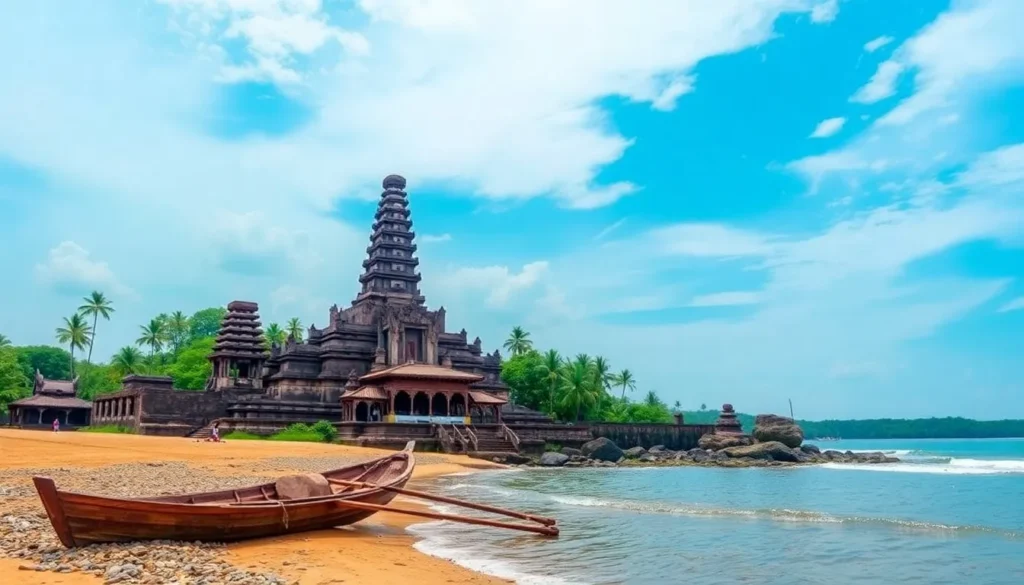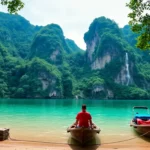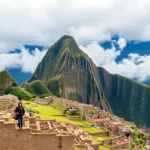Best time to visit Sri Lanka for an unforgettable experience

Are you curious about when is the best time to travel to Sri Lanka? Planning a trip to this breathtaking island, located just south of India, requires an understanding of its climate, including the hottest months and the seasonal rains. In this article, we will provide you with essential climate information and, of course, share the best months to visit Sri Lanka.
Sri Lanka is situated in the Indian Ocean, just north of the Tropic of Capricorn, resulting in a tropical climate characterized by two main monsoons and several distinct seasons throughout the year.
However, the situation is a bit complex. Despite its relatively small size, the island is divided into several climatic regions, ranging from coastal areas to the highlands of the interior. Due to its geography and topography, the monsoons affect different areas in varying ways. This means that at any given time, some regions may be experiencing torrential rain while others bask in sunshine.
Thus, when planning your trip to Sri Lanka, it is crucial to consider the country's climatic patterns to choose the best time that aligns with your interests, route, and travel preferences. But don't worry: with its natural beauty, rich history, and warm hospitality, Sri Lanka is sure to captivate your wanderlust. Just be prepared for the occasional downpour!
The good news is that every month of the year offers opportunities for travel in Sri Lanka. The downside is that each month also has areas affected by monsoons, so you will need to decide which part of the island to visit. Let’s delve into the details.
Understanding the Climate of Sri Lanka
Even though the country is small (its area is slightly larger than that of Aragón), its varied geography means that different climates exist across its regions. Generally, Sri Lanka enjoys a purely tropical climate with high temperatures year-round, averaging between 26°C and 28°C, and intense rainfall distributed across different seasons.
The Highlands in the center of the country experience a milder climate, with lower daytime temperatures and cooler nights. If you’re visiting places like Ella, Haputale, or Nuwara Eliya (which is nearly 2,000 meters above sea level), pack a light jacket to stay comfortable.
Monsoon Seasons in Sri Lanka
Throughout the year, two monsoons impact the coasts of Sri Lanka differently, which is a vital consideration when deciding when to visit. These are:
✓ Southwest Monsoon
This monsoon primarily affects the southwest coast and the central region of Sri Lanka, bringing heavy rainfall and strong winds. The period extends from May to September, during which Colombo, Galle, the southern coast, Yala, Kandy, and the Highlands experience abundant rain, making beaches less appealing.
The torrential rains contribute to the lush tropical vegetation characteristic of Sri Lanka's southwestern coast and nourish the numerous rivers and streams that flow through these regions, providing vital sustenance for local flora and fauna. Moreover, these downpours can lead to stunning waterfalls and temporary lagoons, adding an extra dimension to the region's natural beauty.
The accompanying strong winds play a crucial role in shaping the climate and landscape. They can actually be advantageous for activities such as surfing and windsurfing on the southwestern coast, attracting enthusiasts and tourists alike.
✓ Northeast Monsoon
This monsoon primarily impacts the Northeast Coast and the Trincomalee area, which is less touristy than the southern beach regions but equally enchanting. It typically occurs from December to February. Although rainfall is less intense than during the southwest monsoon, there can still be precipitation in these areas and nearby regions, particularly in the Highlands.
Given that the rainfall is milder and the most affected areas are less frequented by tourists, the months from December to March present a fantastic opportunity to explore Sri Lanka.
✓ Inter-Monsoonal Periods
It is evident that, barring the effects of climate change, the best time to travel to Sri Lanka is during the inter-monsoonal periods, which occur from March to April and from October to November.
During these seasons, the weather is warm and relatively dry across most regions, allowing travelers to enjoy outdoor activities such as relaxing on the beaches, trekking through the mountains, exploring tea plantations, swimming in waterfalls, or visiting historical sites without the worry of getting soaked.
In summary, here are the climatic seasons in Sri Lanka:
- First Inter-Monsoonal Period: March-April
- Southwest Monsoon: May-September
- Second Inter-Monsoonal Period: October-November
- Northeast Monsoon: December-February
Best Time to Spot Whales
Just like the climate, there are two marked seasons for whale watching in Sri Lanka, depending on the area. On the Southern Coast, particularly around Mirissa, you can observe whales from November to April when the sea is calmer.
Meanwhile, from Trincomalee in the Northeast Coast, you can also have the chance to spot these magnificent cetaceans between May and September. As this destination is less crowded, the experience can be more rewarding and enriching (and it won’t feel like you are on a “whale hunt”).
Summary: When to Visit Sri Lanka
As a general rule, assuming climate change doesn’t alter everything dramatically, the best time to visit Sri Lanka is from December to April, which is ideal for exploring the southern and western coasts, the Cultural Triangle, and the Highlands.
If, for any reason, you cannot travel during that timeframe, from late July to October, the eastern coast enjoys pleasant weather and calmer seas while the south tends to have quite poor conditions.
Ultimately, the best time to visit Sri Lanka depends on your personal preferences and the geographical area you wish to explore. However, keep in mind that the weather in Sri Lanka can be unpredictable, and it has been changing dramatically in recent years, making it impossible to guarantee that you will avoid random showers or even flooding (the last time we visited in late January, we barely escaped a downpour).
We hope this article helps clarify the best time to travel to Sri Lanka. Have you been? When? What was your experience like?
Stay updated on our Sri Lanka journey through our Instagram stories.
| Save on your trip |
| Get cheap flights to Sri Lanka here |
| Find accommodations at the best prices here |
| Book activities and excursions in Sri Lanka here |
| Get a 5% discount on your travel insurance with IATI here |
| Reserve airport transfers here |
| Find out how to withdraw money without fees here |
| Enjoy a 5% discount on your eSIM from Holafly here |
| The best books and travel guides here |
| All our articles related to Sri Lanka |





Deja una respuesta